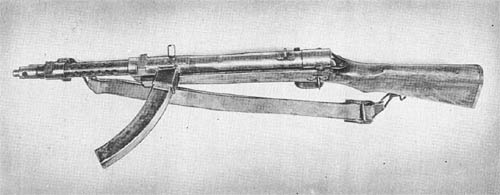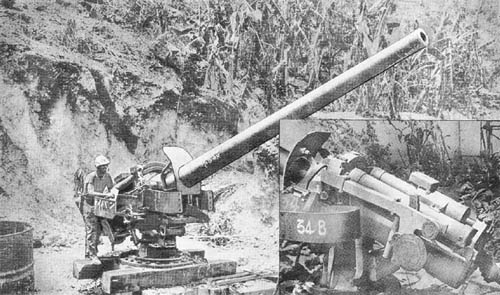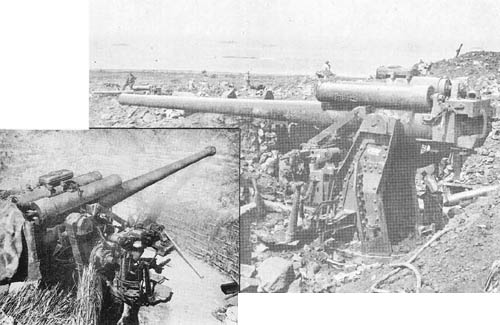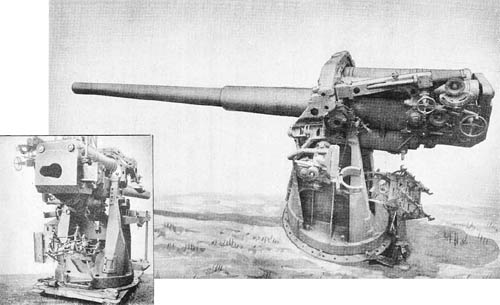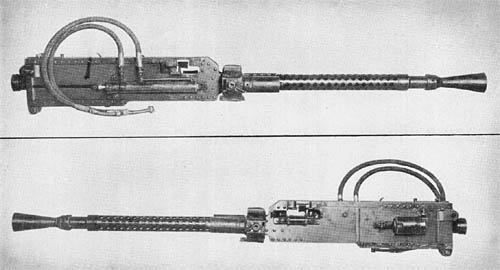
This weapon, an improvement on the 12.7 mm Japanese copy of the U.S.
The recoil mechanism consists of a metal cylinder into which is fitted a coil spring. Through the center of this extends a 5/16-inch rod which screws into a brass bushing. The rod extends through the spring follower which rests on the coil spring and is secured by two lock nuts. Buffering action takes place in the recoil direction only. There is no quick change barrel. Because of the weight of the bolt and the heavy recoil spring, a booster is used, this being found in the flash hider.
The gun has a high cyclic rate of fire, muzzle velocities of 2,304 f/s (A.P.), 2,430 f/s (H.E.), and a penetration performance of 7/8-inch homogenous plate at 20° at 200 yards; 1/2-inch at 20° at 580 yards. The maximum weight lifting capacity of the belt is 62 pounds.
The disassembly of the weapon is the same as the Browning
SPECIFICATIONS
| Caliber | 20 mm (0.79 in.) | |
| Weight w/accessories | 104 11/16 lbs. | |
| Weight w/o accessories | 86 3/4 lbs. | |
| Length (overall) | 63 3/4 ins. | |
| Sight radius | ||
| Principle of operation | Recoil with muzzle cup | |
| Feeding device | Metal link belt type | |
| Capacity of feeding device | 100 rounds | |
| Cooling system | Air | |
| Ammunition types | A.P., H.E., Incendiary | |
| Cyclic rate | 950 r.p.m. | |
| Type of sight | Reflector | |
| Weight of barrel | 12 1/8 lbs. | |
| Length of barrel | 35.4 ins. | |
| Length of rifling | 31.5 ins. | |
| Rifling | ||
| Twist | R.H. | |
| Form | ||
| No. of grooves | 8 | |
| Depth of grooves | ||
| Width of grooves | ||
| Chamber pressure | ||
| Muzzle velocity (A.P. Shot) | 2,304 f/s | |
| (H.E. Shell) | 2,430 f/s | |
| Effective range | 600 yds. |
Japanese: p. 252 (June 1, 1945)
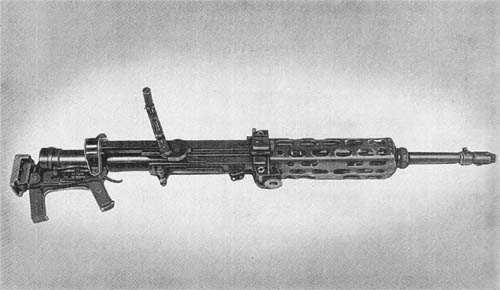
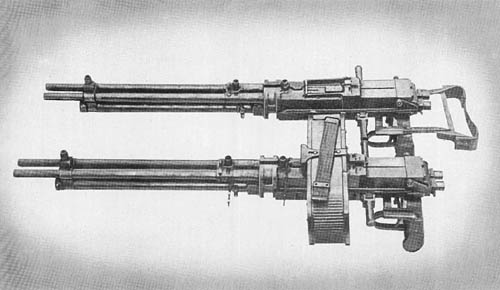
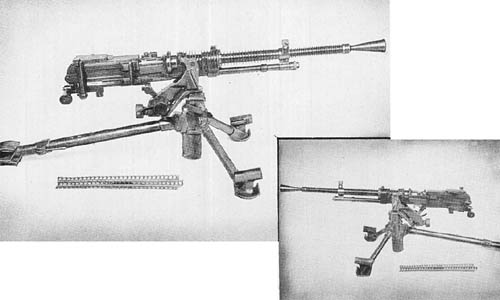
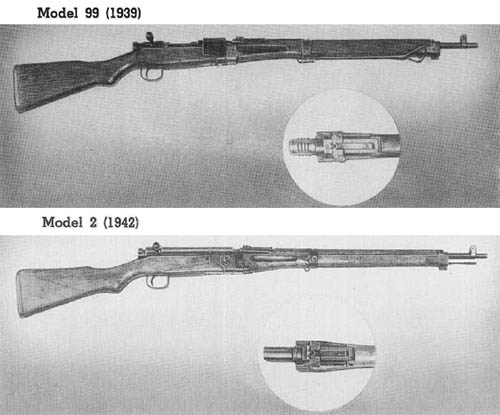
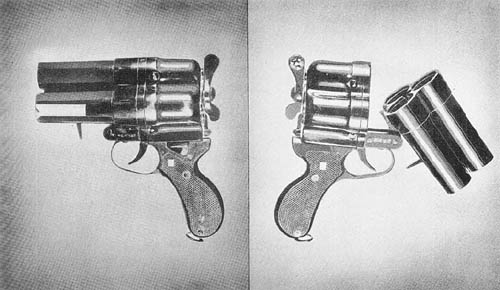
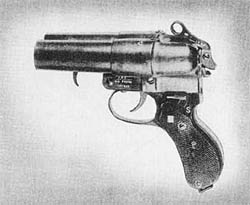 and firing the round in the selected barrel. The three stops on the barrel selector lever are as follows: the left hand stop for the left hand barrel, the central stop for the top barrel, and the right hand stop for the right hand barrel.
and firing the round in the selected barrel. The three stops on the barrel selector lever are as follows: the left hand stop for the left hand barrel, the central stop for the top barrel, and the right hand stop for the right hand barrel.